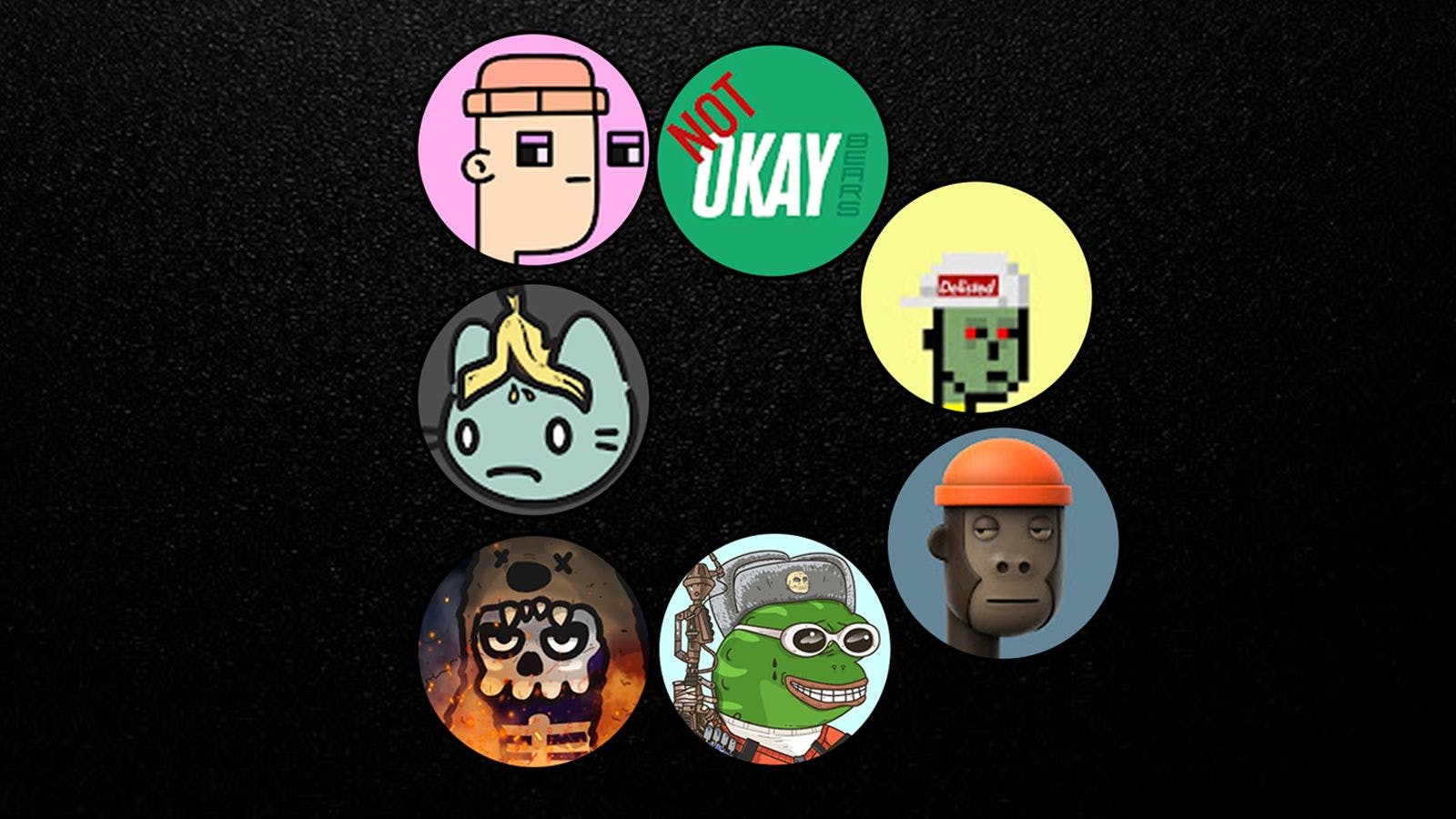Whether NFTs have a problem with plagiarism is a matter of perspective. There are hundreds of derivative projects, some of which generated huge amounts of ETH and have cultural significance. To some, they represent outright plagiarism. To others, they’re art, social commentary and self-expression. Some are delisted from OpenSea while others flourish. The world of the derivative NFT raises important questions about the nature of art and copyright, but it can also be a confusing and contradictory space.
Here’s a breakdown of the most significant derivative projects in NFT history and what happened to them.
3DPunks
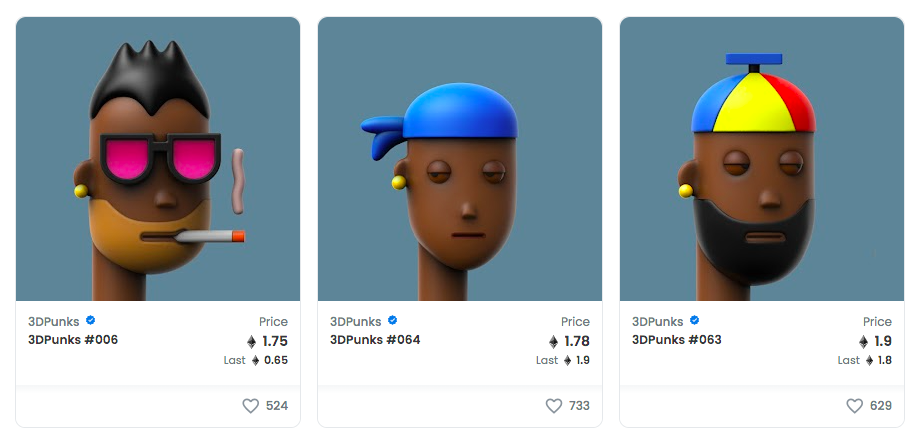
https://opensea.io/collection/3dpunks
Although the 3D element allowed creators to argue that these NFTs weren’t totally derivative, few would call them original. As the name suggests, each NFT is a 3D version of one of the original Punks. These were endorsed by the famous collector Punk 4156 and they were huge. 3DPunks has so far amassed a trading volume of 826 ETH and individual NFTs used to sell for around 5-6 ETH. Prices have cooled somewhat since the glory days but the floor still sits at a healthy 1.75 ETH. It helped that only 100 3DPunks were ever released, but three-dimensional derivatives are always popular.
Sad Frogs
The tragic tale of Sad Frogs begins with 7000 generated frog images that looked quite similar to the popular Pepe meme. Gas fees were high during the minting process, so some people paid up to $300 for the 0.05 frogs. All in all the project was worth around $4 million when Matt Furie, the original creator of Pepe, filed a DMCA and forced OpenSea to delist. The meme has a troubled history and was once associated with the far right and Neo-Nazis, before Furie took legal action there too. The case of Sad Frogs is ironic because this was probably the least derivative project on the list but was swept away regardless. It all left a bitter taste and many feel nothing but resentment towards Furie for destroying such a popular collection. Some took to Twitter and noted that Furie isn’t exactly innocent. His Pegz project looks a bit like…well…draw your own conclusions:

https://twitter.com/IcedCoolyETH/status/1427338278517166087
Disney, are you reading this?
Not Okay Bears
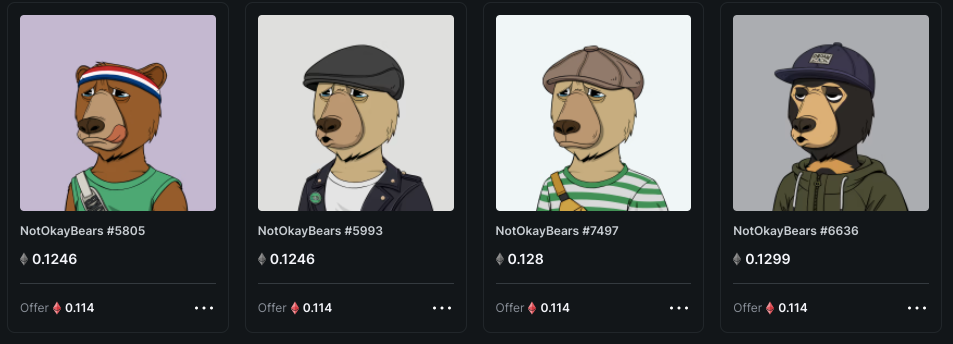
https://looksrare.org/collections/0x76B3AF5F0f9B89CA5a4f9fe6C58421dbE567062d
Not Okay Bears is as derivative as they come. Even the project website is near identical to the one owned by Okay Bears. The NFTs are simply flipped versions of the popular Solana collection, this time on ETH. Despite the similarities, Not Okay Bears became one of the most popular collections on OpenSea and LooksRare in the hours after it dropped. OpenSea moved quickly to delist, but it's still available on LooksRare where the floor price is 0.165 ETH. The team is also working on their own marketplace to avoid any future delisting issues. Not Okay Bears sparked fierce debate on Twitter. Some users suggested that it encapsulated everything bad about NFTs, others enjoyed the joke and welcomed the opportunity to buy on ETH.
CryptoMories
Once a project is delisted from OpenSea it usually stays that way; there isn’t an easy way back. Not for CryptoMories. When the collection of 10,000 skull characters was delisted, people initially thought it was a technical issue. More details emerged and it became clear that somebody had issued a DMCA because one of the traits - not the whole character - was similar to their artwork. The mystery claimant was apparently demanding an “absurd amount” of compensation. This individual was eventually revealed as Sabet, a popular NFT artist with around 40k followers on Twitter. That popularity quickly evaporated under a barrage of criticism, with some suggesting that Sabet himself had profited from licensed artwork. Whether due to the criticism or a simple change of heart, Sabet rescinded the DMCA and both sides tweeted positively about each other.

https://twitter.com/sabet/status/1498148948401213442
Delisted Tiny Punks

https://opensea.io/collection/delisted-tiny-punks
We know we know, another Punks derivative, but this one has an intriguing history. It started life as Fast Food Baby Punks before being delisted after a DMCA. FFBP was staggeringly successful, with a trading volume of 200 ETH. The team could have called it a day there, but they decided to protest. Taking a stand against centralised marketplaces in the supposedly decentralised crypto space, they launched the Delisted Tiny Punks. Here the statement is simple: the artwork is a protest against centralisation. Some will argue that this justifies the derivative nature of the NFTs, others will disagree, but it shows the complexity of the debate. The project’s OpenSea profile proudly bears the words “not associated with Lava Labs” as a badge of honour.
Uncool Cats

https://opensea.io/collection/uncool-cats-nft
It’s fair to say that Uncool Cats is everything that Cool Cats isn’t. Branding itself the “lamest cats on the blockchain” it leans heavily into anti-culture. The cats are variously described as “uncool,” “genetic lottery losers” and “cats you've never heard of.” The premise is simple, these cats were the neglected bunch left to do the Cool Cat’s homework. Despite (or perhaps because of) this, the collection is totally sold out with a sales volume of 848 ETH. It also remains on OpenSea, having so far avoided the dreaded DMCA. This could be because the story behind Uncool Cats is enough to establish it as an independent project. Collectors certainly seem to value the fleshed-out world. Uncool Cats is a fantastic example of how a derivative project can function; the artwork may be similar, but the anti-culture vibes are original.
Doodled Punks
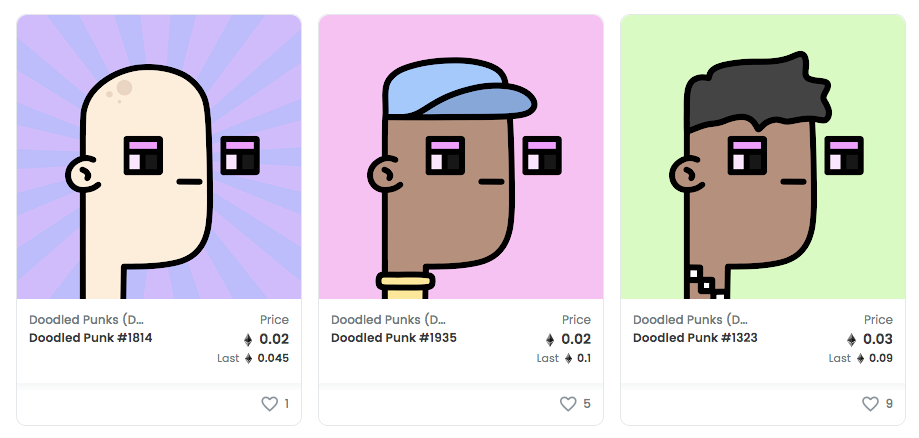
https://opensea.io/collection/doodled-punks
Doodled Punks is unique because it manages to be a derivative of two collections. This divide and conquer method has so far kept it on OpenSea. As the name suggests, these NFTs are half doodle, half punk. They might not have the highest floor price (0.01 ETH) but they do show that derivative projects can also be original. By combining the two art styles, the team has managed to make something new and capture two pieces of NFT history. That’s probably why the Doodled Punks have been so popular and can boast of over 1000 owners.
Ryder Ripps BAYC
Ryder Ripps has attained near-legendary status as an NFT activist, social commentator and artist. He’s also a fierce critic of BAYC, alleging that the project is inherently racist and even contains Nazi imagery. Enter his BAYC collection on Foundation. Ryder Ripps Apes aren’t just derivative; they’re identical to their OpenSea counterparts. The Apes make a social and cultural point. The collection description simply reads: “you can't copy an NFT context shifts with each mint.” Ryder claims that he seeks to define “the nature” of NFTs and that you “can’t copy” because context is everything. His project has different aims than the Yuga original - so how can it be called a copy? This argument also diminishes the value of the image attached to the NFT token, placing it instead on the cultural context and blockchain immutability. This is obviously a protest against BAYC but it also poses further questions about art, ownership and display more generally, as the following Twitter Spaces transcript shows:
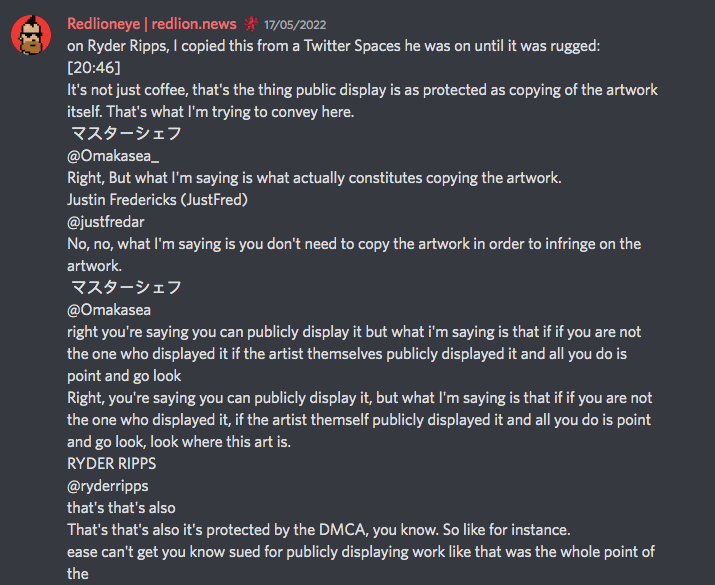
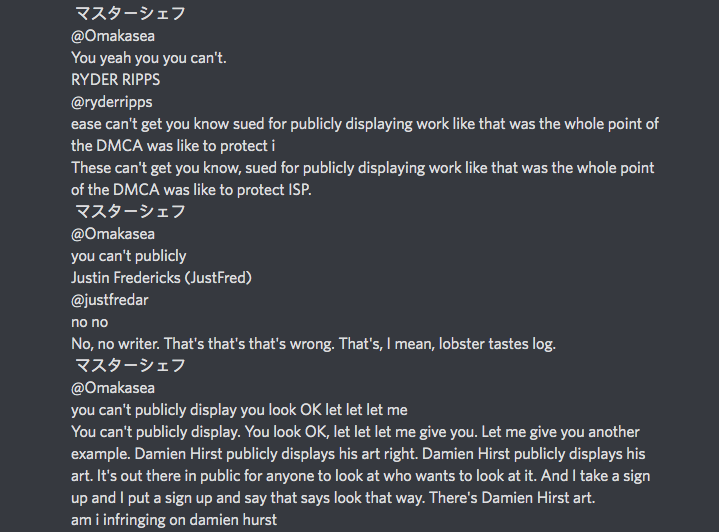
So what does this mean for NFTs and art more generally? Are these projects viable artistic expression or simple copying? Do they have a place in the decentralised NFT space or should they all be delisted? Should creators be rewarded for projects with minimal changes? These questions are difficult to answer but perhaps the big takeaway is that there needs to be something behind the art. Simply flipping projects for the sake of it, with no backstory, no cultural commentary and nothing to say will seem like a cash grab - but is that a statement in itself?
Read More:
What’s the Difference Between Inspiration and Imitation?
500k Lawsuit Hits Pepe Creator
The Top Five CryptoPunks Moments™ of 2020


